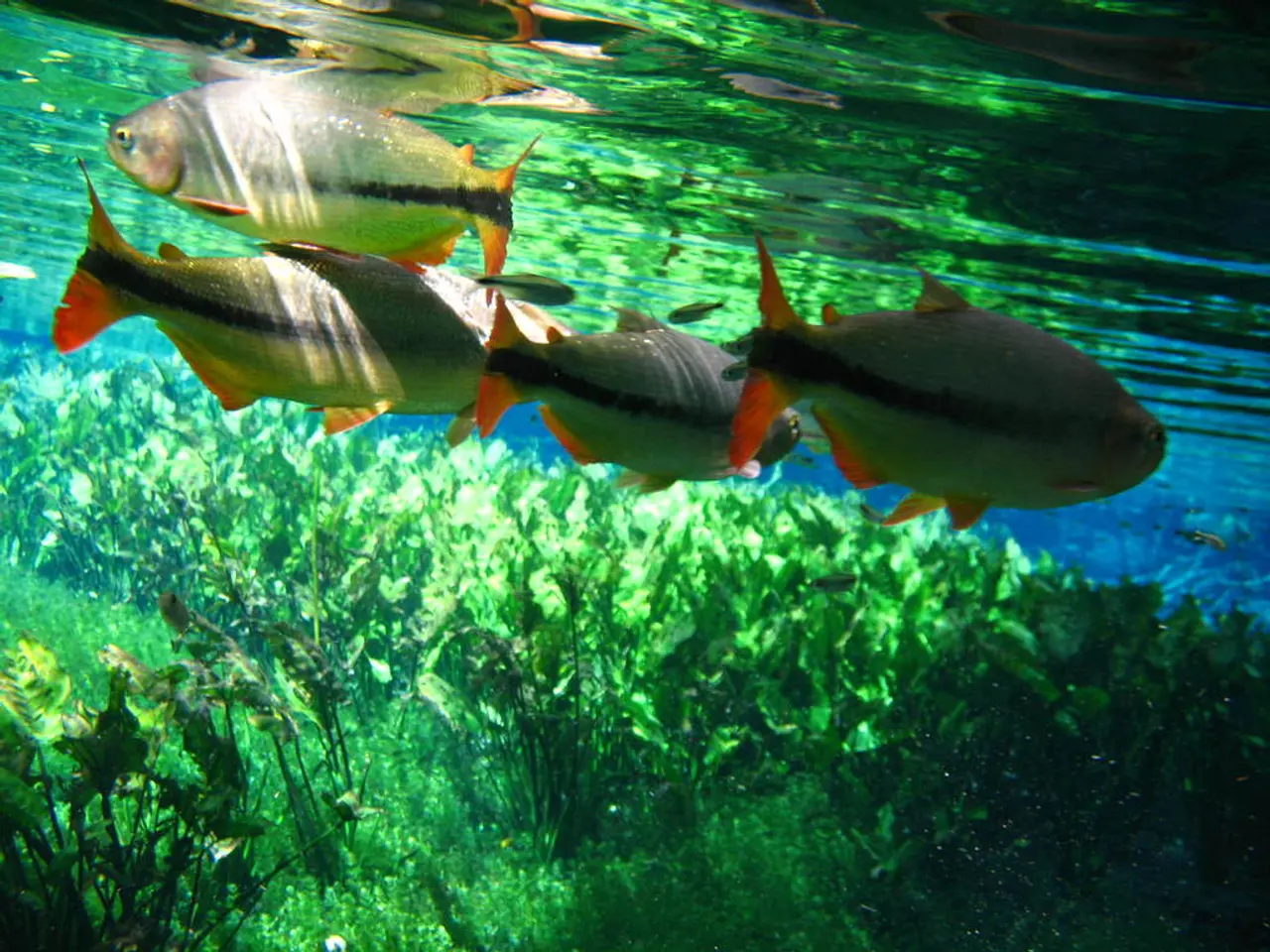Safety precautions for sea swimming: Identifying potential water contaminants prior to a plunge.
In the summer months, when water levels are lower, it's essential to be aware of potential health risks when swimming in lakes. Here, we outline three key elements to consider: blue-green algae, cercariae, and Vibrio bacteria.
**Signs of Water Contamination**
1. **Blue-Green Algae (Cyanobacteria)**
A thin, light green film or scum on the water's surface or just below it could indicate the presence of harmful blue-green algae. These organisms produce toxins, such as microcystin, which can cause gastrointestinal, neurological, and liver problems if ingested or come into contact with the skin[1][3].
2. **Cercariae**
Cercariae, the larval stage of certain parasites, are typically invisible to the naked eye. If present, they can cause skin irritation or more severe infections[2].
3. **Vibrio Bacteria**
Vibrio bacteria, often found in warmer, brackish, or saltwater environments, can cause severe gastrointestinal and wound infections[1].
**Factors to Consider**
- **Warm Water Conditions**: Encourage the growth of algae and bacteria, potentially leading to harmful algal blooms (HABs)[1][3]. - **Nutrient Runoff**: High levels of nitrogen and phosphorus from agricultural runoff, stormwater, and wastewater can stimulate algae growth[1]. - **Weather Events**: Heavy rainfall or monsoons can both disrupt and distribute contaminants, depending on the context[1]. - **Water Clarity and Depth**: Shallow, calm waters are more susceptible to contamination than deeper or more turbulent ones[1]. - **Nearby Land Use**: Agricultural areas, sewage outputs, and industrial sites can contribute pollutants[2].
To ensure safety, it's crucial to monitor water conditions visually for signs like algae blooms and perform regular water testing for pathogens and toxins. Always follow local advisories and consult health guidelines before engaging in water activities.
It's also advisable to be aware of specific water bodies. Lakes not designated as bathing waters may not be mentioned in reports, but that doesn't necessarily mean swimming is not allowed there. In the case of the Baltic Sea, Sascha Maier recommends reading local press for information about water contamination with vibriosis[4].
When enjoying water activities this summer, remember to take precautions to protect yourself and your loved ones from potential health hazards.
[1] European Environment Agency (2021). Harmful algal blooms (HABs) in Europe. Retrieved from https://www.eea.europa.eu/topics/water/harmful-algal-blooms
[2] Centers for Disease Control and Prevention (2021). Cercariae. Retrieved from https://www.cdc.gov/parasites/schistosomiasis/related_faqs.html
[3] World Health Organization (2019). Blue-green algae (cyanobacteria) and human health. Retrieved from https://www.who.int/news-room/q-a-detail/blue-green-algae-cyanobacteria-and-human-health
[4] Maier, S. (2020). Vibriosis in the Baltic Sea: Facts and Prevention Tips. Retrieved from https://www.baltic2030.org/en/news/vibriosis-in-the-baltic-sea-facts-and-prevention-tips/
- To keep your skin healthy, it's important to avoid coming into contact with cercariae, the larval stage of certain parasites, which can be invisible to the naked eye and cause skin irritation or more severe infections.
- For a balanced and healthy lifestyle, paying attention to nutritional aspects, such as microcystin, a toxin produced by harmful blue-green algae, is crucial, as ingestion can lead to gastrointestinal, neurological, and liver problems.
- Practicing fitness and exercise regularly, as well as maintaining a good skin-care routine, can support overall health, but it's equally essential to be mindful of environmental factors, such as water contamination due to harmful algal blooms (HABs), which can be triggered by warm water conditions, nutrient runoff, and weather events.




